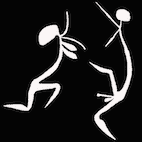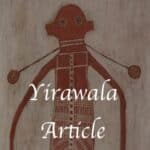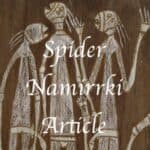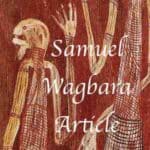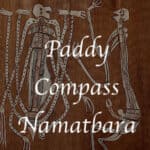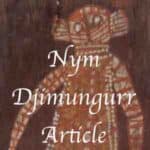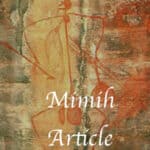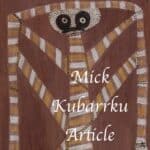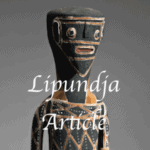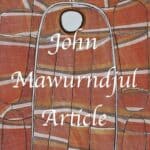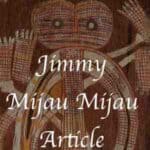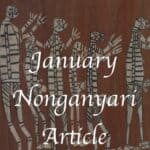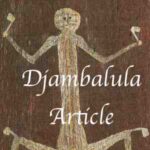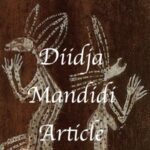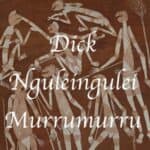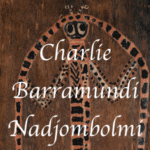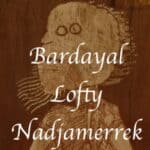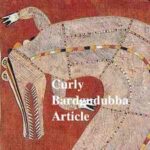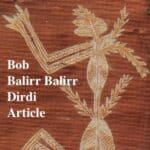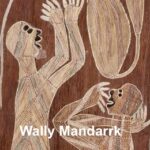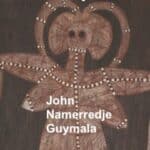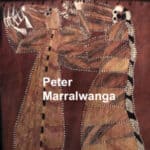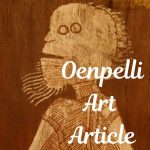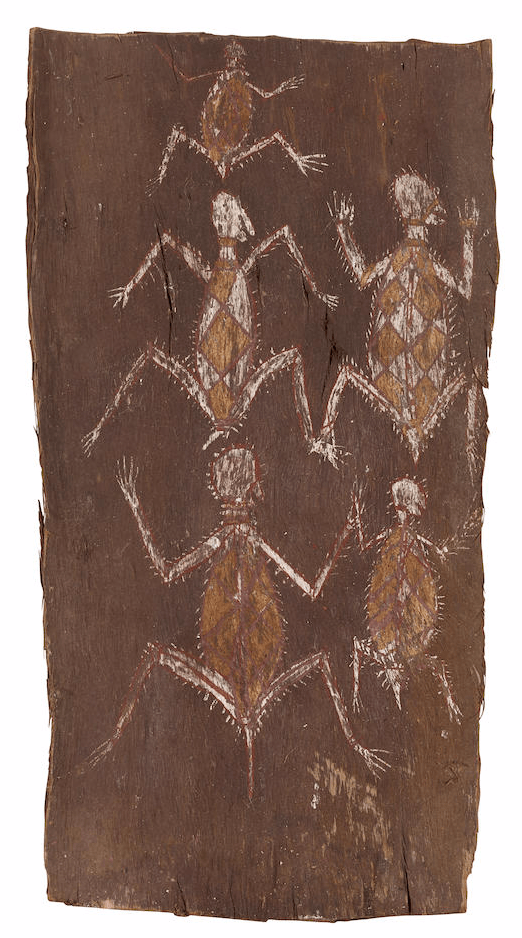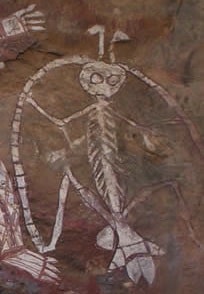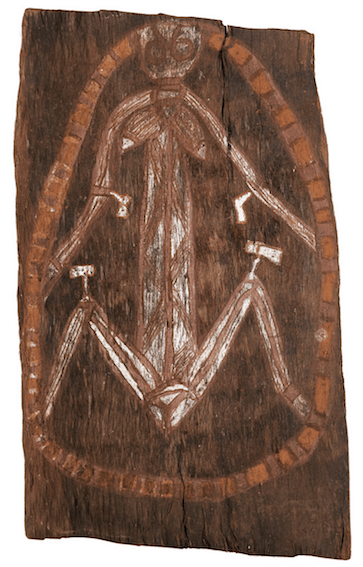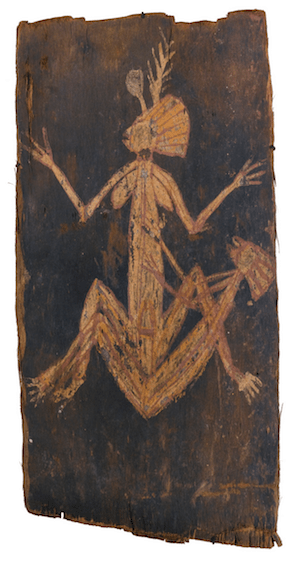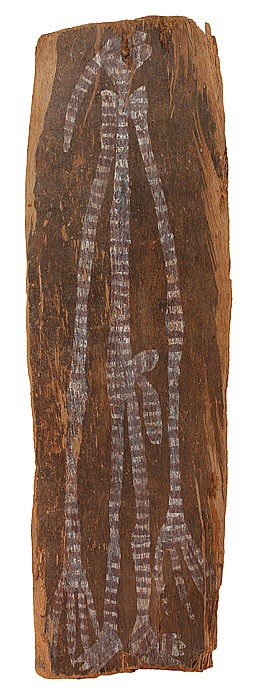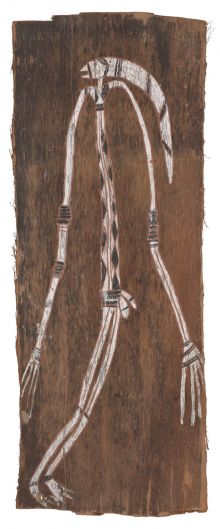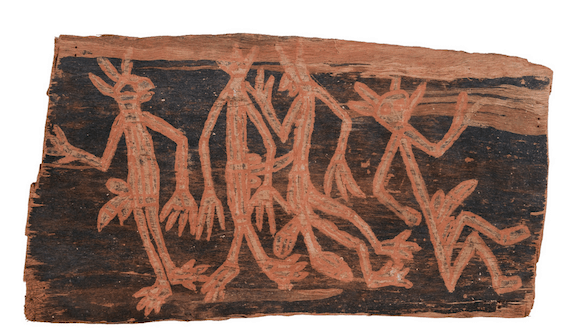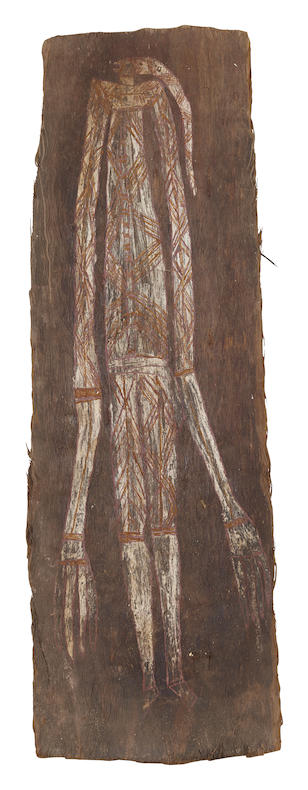Nadjombolmi Early Oenpelli Bark paintings
Nadjombolmi was an early bark painter in the Oenpelli region. He only has a few known works because he died before bark painting became commercial.
The aim of this article is to assist readers in identifying if their aboriginal bark painting is by Nadjombolmi. It compares the few known examples of his work. Naiyomeolmi painted in an Oenpelli Bark Painting style.
If you have a Nadjombolmi bark painting to sell please contact me. If you just want to know what your bark painting is worth to me please feel free to send me a Jpeg. I would love to see it.
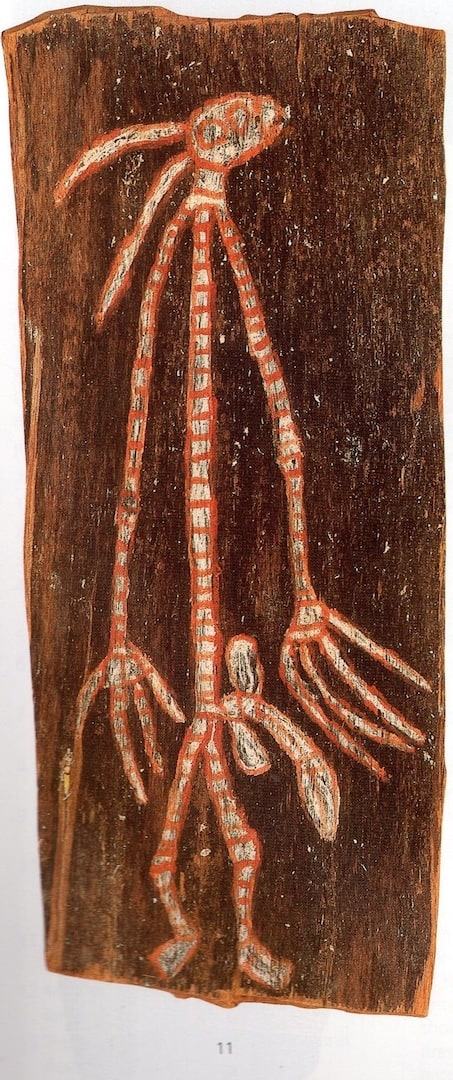
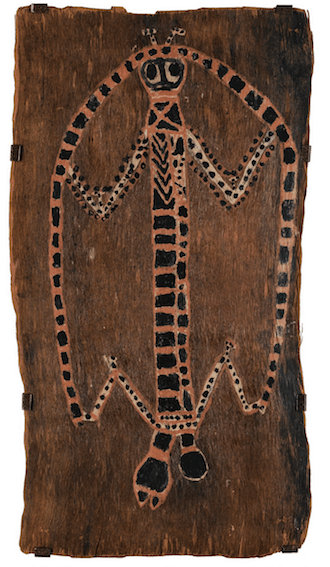
Style
Nadjombolmi painted bark paintings in an archaic style full of power and spirituality. Only a few examples of his work a known but they are so powerful I think he deserves to recognition as an important artist. His barks deal with figures from the spirit world such as Namorrordo which are a malicious spirit of the stone country. He also painted Namarrkon the lightning spirit They are on an ochre background with white kaolin figures covered in fine red lines. His work exhibits a freedom and flow that I find highly desirable in a great bark painting. He died before barks were commercially collected in the 1960’s which accounts for why so few of his work exist. His barks have rough cut edges.
His bark paintings can only really be compared to other very early Oenpelli artists like Mandidaidai or Nym Jimungurr.
Biography
Nadjombolmi belonged to the Bardmardi clan spoke Jawoyn and kundedjnjenghmi language. He was of Yirridjdja Moiety. He was born around 1895 and died in 1967. Along with many other Arnhem Land Artists who did bark paintings, there is not a lot of information readily available about Naiyomeolmi. He was known to have been a great hunter and fisherman which earned him the nickname Barramundi Charlie. He was known to restore older rock paintings in keeping with tradition to allow the paintings to retain the power of the ancestors. If anyone knows more information about the biography of Naiyombolmi, please contact me as I would like to add it to this article.
Naiyombolmi was also called Naiyomeoli or Najombolmi

The packing aboriginal bark painting is best done by an expert. If you need to make a box, make it so that is of an inflexible material with the bark painting floating inside the box on foam beads or bubble wrap.
Care for Aboriginal Bark Painting by ensuring it always stays dry and does not move as ochres can flake off. A bark painting is best stored in a dust-free place and away from insects.
All images in this article are for educational purposes only.
This site may contain copyrighted material the use of which was not specified by the copyright owner.
Western Arnhem land Artists and Artworks
Nadjombolmi Bark Painting images
The following images are not a complete list of the artist’s works but give some idea of his style and variety.
